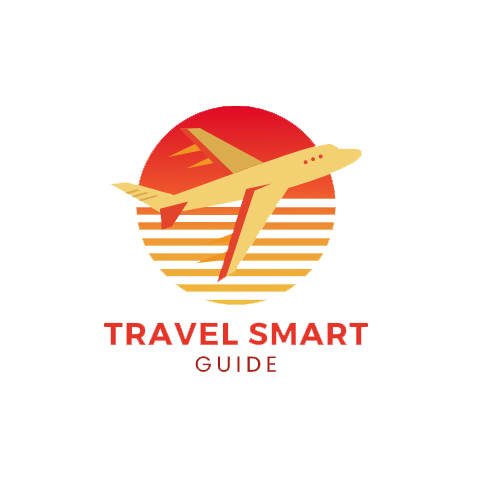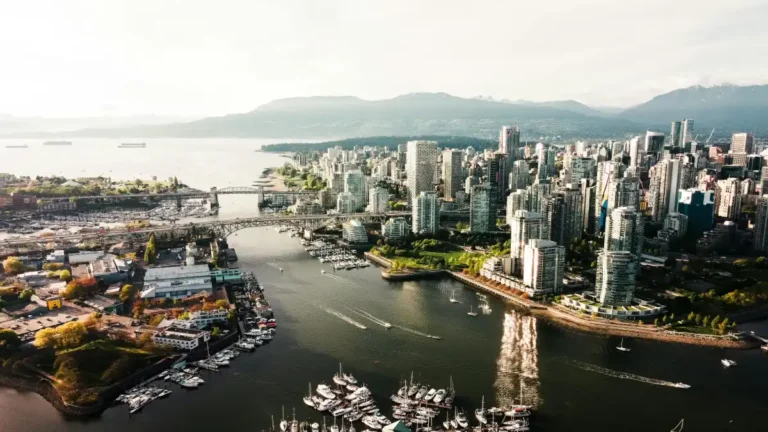
A Quick Summary of Vancouver’s Natural Beauty
Vancouver, British Columbia, is a city renowned for its breathtaking natural landscapes that seamlessly blend with its urban environment. From the lush greenery of Stanley Park to the towering heights of Grouse Mountain, Vancouver offers an array of outdoor experiences that cater to both adventure seekers and those looking for a peaceful escape in nature. This review takes an in-depth look at some of Vancouver’s most iconic natural attractions, providing insights into what makes them worth visiting and tips for making the most of your trip.
Overview of Stanley Park, Grouse Mountain, and Beyond
Stanley Park and Grouse Mountain are two of the most famous natural attractions in Vancouver, each offering unique experiences that highlight the region’s diverse landscape. Stanley Park is a sprawling urban park that features scenic trails, historic landmarks, and cultural exhibits, making it a must-visit for anyone in the city. Grouse Mountain, on the other hand, offers a thrilling escape into the wilderness with activities ranging from hiking and wildlife viewing to winter sports. Beyond these popular spots, Vancouver is surrounded by other natural wonders such as Capilano Suspension Bridge, Lynn Canyon Park, and Pacific Spirit Regional Park, each offering its own unique charm.
Stanley Park: The Crown Jewel of Vancouver
History and Significance of Stanley Park
Stanley Park is not just a park; it’s an emblem of Vancouver’s commitment to preserving natural spaces within an urban setting. Established in 1888, Stanley Park was Vancouver’s first official green space, and over the years, it has evolved into a cherished landmark that welcomes over 8 million visitors annually. The park spans over 1,000 acres and is larger than New York’s Central Park, offering a mix of old-growth forest, meticulously maintained gardens, and cultural exhibits that celebrate both the indigenous and colonial history of the area.
Must-Visit Attractions within Stanley Park
Stanley Park is home to numerous attractions that cater to a wide range of interests. Whether you’re looking to immerse yourself in nature, learn about local culture, or simply enjoy a leisurely stroll, the park has something for everyone.


Seawall: A Scenic Walking and Biking Path
The Stanley Park Seawall is perhaps the park’s most famous feature, stretching for 9 kilometers along the waterfront. This path offers stunning views of the city skyline, the North Shore Mountains, and the Burrard Inlet. The Seawall is perfect for walking, jogging, or biking, and it’s a great way to explore the park at your own pace. Along the way, you’ll pass by iconic landmarks such as the Nine O’Clock Gun, Brockton Point Lighthouse, and Siwash Rock, each adding to the experience.
Totem Poles: A Cultural Experience
At Brockton Point, you’ll find a collection of totem poles, one of the most visited attractions in British Columbia. These totem poles, carved by indigenous artists, are a powerful representation of the region’s First Nations culture and history. Each pole tells a unique story, often reflecting the beliefs, traditions, and history of the indigenous peoples. The totem poles have become symbols of Vancouver, embodying the city’s respect for its indigenous heritage.

Vancouver Aquarium: Marine Life Up Close
Nestled within Stanley Park, the Vancouver Aquarium offers an educational experience for visitors of all ages. The aquarium is home to a variety of marine life, including dolphins, sea otters, and jellyfish. It also serves as a hub for marine research and conservation efforts, making it not only a tourist attraction but also an institution dedicated to protecting ocean life. The interactive exhibits and live shows make it a must-see, especially for families with children.
Lost Lagoon and Beaver Lake: Hidden Gems
For those seeking tranquility, Lost Lagoon and Beaver Lake offer peaceful retreats away from the busier parts of the park. Lost Lagoon is a serene body of water that attracts a variety of bird species, making it a favorite spot for birdwatchers. Beaver Lake, on the other hand, is a secluded, forested area that feels worlds away from the city, despite being just a short walk from the bustling downtown. Both locations offer a chance to connect with nature and experience the quieter side of Stanley Park.
The Best Time to Visit Stanley Park
Stanley Park is a year-round destination, but the best time to visit depends on your preferences. Spring and summer are ideal for exploring the gardens, biking the Seawall, and enjoying outdoor activities, while fall brings beautiful foliage and a quieter atmosphere. Winter offers a unique charm, especially if you’re interested in seeing the park’s seasonal displays or taking part in holiday events.
Pros and Cons of Visiting Stanley Park
Pros:
- Diverse range of attractions, from cultural sites to natural beauty
- Easily accessible from downtown Vancouver
- Free admission to most areas
- Suitable for visitors of all ages
Cons:
- Can be crowded during peak tourist season
- Limited parking availability
- Some areas may be challenging for those with mobility issues
Grouse Mountain: The Peak of Vancouver
An Introduction to Grouse Mountain
Grouse Mountain, often referred to as the “Peak of Vancouver,” offers a dramatic contrast to the urban environment of the city below. Standing at 1,231 meters above sea level, Grouse Mountain provides breathtaking views of Vancouver, the Pacific Ocean, and the surrounding mountains. It’s a year-round destination that offers a wide range of activities, from hiking in the summer to skiing in the winter, making it a must-visit for outdoor enthusiasts.
Activities to Enjoy on Grouse Mountain
Grouse Mountain is known for its diverse range of activities that cater to all levels of adventure seekers. Whether you’re looking for a relaxing day trip or an adrenaline-pumping experience, Grouse Mountain has something for everyone.

The Skyride: A Panoramic Cable Car Experience
The Grouse Mountain Skyride is the largest aerial tramway system in North America, and it’s the most popular way to reach the top of the mountain. The Skyride takes visitors on a 1,610-meter journey from the base to the summit, offering panoramic views of the city, ocean, and surrounding mountains. It’s an unforgettable experience, especially on a clear day when you can see for miles in every direction.
Wildlife Refuge: Meet Vancouver’s Grizzly Bears
At the top of Grouse Mountain, you’ll find the Grouse Mountain Wildlife Refuge, home to two resident grizzly bears, Grinder and Coola. These bears were rescued as cubs and have lived on the mountain ever since, providing visitors with a rare opportunity to see these magnificent creatures up close. The refuge is not only a place to observe wildlife but also to learn about conservation efforts and the importance of protecting the natural habitat of these animals.
The Grouse Grind: A Hiker’s Challenge
For those seeking a physical challenge, the Grouse Grind is a must-do. This steep, 2.9-kilometer trail is often referred to as “Mother Nature’s Stairmaster” and attracts fitness enthusiasts from all over the world. The hike is strenuous, with an elevation gain of 853 meters, but the sense of accomplishment and the views from the top make it all worthwhile. The Grouse Grind is open from spring to fall, and it’s important to be prepared with proper footwear and plenty of water.
Winter Sports: Skiing, Snowboarding, and More
During the winter months, Grouse Mountain transforms into a snowy paradise, offering a range of winter sports. The mountain features 33 ski and snowboard runs, as well as terrain parks for all skill levels. In addition to skiing and snowboarding, visitors can enjoy snowshoeing, ice skating, and even a sleigh ride through the snow-covered forest. Grouse Mountain is also home to the Light Walk, a magical, illuminated trail that winds through the alpine forest, providing a unique winter experience.
Dining and Accommodation on Grouse Mountain
Grouse Mountain offers a variety of dining options, ranging from casual eateries to fine dining. The Observatory, located at the top of the mountain, is a fine dining restaurant that offers gourmet meals with stunning views of the city below. For a more casual experience, Altitudes Bistro and Lupins Café offer a variety of dishes that can be enjoyed in a relaxed atmosphere. While there are no accommodations on Grouse Mountain itself, there are several hotels nearby that offer easy access to the mountain’s attractions.
Pros and Cons of Visiting Grouse Mountain
Pros:
- Wide range of activities for all seasons
- Stunning panoramic views from the summit
- Unique wildlife viewing opportunities
- Accessible by public transportation and car
Cons:
- Admission fees for activities and attractions
- The Grouse Grind is physically demanding
- Weather conditions can impact visibility and activities
Exploring Beyond: Other Natural Attractions Near Vancouver
Vancouver is surrounded by natural beauty, and while Stanley Park and Grouse Mountain are the most famous, there are many other attractions worth exploring. These spots offer a variety of experiences, from thrilling adventures to peaceful escapes, making them great additions to any Vancouver itinerary.
Capilano Suspension Bridge: A Thrilling Adventure
Located just a short drive from downtown Vancouver, the Capilano Suspension Bridge Park offers a thrilling adventure in the treetops. The main attraction is the 137-meter-long suspension bridge that hangs 70 meters above the Capilano River. Crossing the bridge is an exhilarating experience, especially as it sways gently with the movement of visitors. In addition to the suspension bridge, the park features a series of treetop walkways, a cliffwalk, and educational exhibits that explore the area’s natural and cultural history.
Lynn Canyon Park: A Tranquil Escape
For a more tranquil experience, Lynn Canyon Park offers a peaceful retreat into nature. The park is home to a lesser-known suspension bridge, which, while shorter than the one at Capilano, offers equally stunning views with fewer crowds. Lynn Canyon Park features a network of trails that wind through the lush rainforest, leading to waterfalls, swimming holes, and scenic viewpoints. The park is also home to the Lynn Canyon Ecology Centre, where visitors can learn about the local ecosystem and the importance of conservation.
Queen Elizabeth Park: A Botanical Paradise
Queen Elizabeth Park is another must-visit natural attraction in Vancouver. Located on Little Mountain, the highest point in the city, the park offers spectacular views of the city skyline and the surrounding mountains. The park is best known for its beautifully landscaped gardens, including the Quarry Garden, a former rock quarry transformed into a lush, sunken garden. The Bloedel Conservatory, located at the top of the park, is a tropical paradise that houses exotic plants and free-flying birds from around the world.
Pacific Spirit Regional Park: A Hidden Forest Oasis
Located on the western edge of Vancouver, near the University of British Columbia, Pacific Spirit Regional Park offers a hidden oasis of forest trails and natural beauty. The park covers over 750 hectares of forest and is crisscrossed by more than 70 kilometers of trails, making it a popular spot for hiking, jogging, and birdwatching. The park’s diverse ecosystem includes old-growth trees, wetlands, and a variety of wildlife, providing a peaceful escape from the hustle and bustle of the city.
Pros and Cons of Exploring Beyond Stanley Park and Grouse Mountain
Pros:
- Offers a variety of experiences beyond the main attractions
- Less crowded than Stanley Park and Grouse Mountain
- Opportunities to explore Vancouver’s diverse ecosystems
- Free or low-cost entry to most locations
Cons:
- Requires transportation to reach these locations
- Some areas may have limited accessibility
- Weather can impact outdoor activities
How to Get Around Vancouver’s Natural Attractions
Vancouver is known for its efficient and accessible transportation system, making it easy to get around and explore the city’s natural attractions.
Public Transportation: Buses, SkyTrain, and SeaBus
Vancouver’s public transportation system, operated by TransLink, is a convenient and affordable way to get around the city. The SkyTrain, Vancouver’s rapid transit system, connects downtown with various neighborhoods and is a quick way to reach attractions like Stanley Park and Grouse Mountain. The SeaBus, a passenger ferry, provides a scenic route across Burrard Inlet, connecting downtown Vancouver with the North Shore. Buses operate throughout the city and surrounding areas, providing easy access to attractions like Capilano Suspension Bridge and Lynn Canyon Park.
Biking and Walking: Eco-Friendly Options
Vancouver is a bike-friendly city with an extensive network of cycling paths, including the Seawall in Stanley Park. Biking is a great way to explore the city’s natural attractions at your own pace while reducing your carbon footprint. Many attractions, such as Stanley Park and Queen Elizabeth Park, are also easily accessible on foot, allowing you to enjoy the scenery and discover hidden gems along the way.
Renting a Car: Convenience and Flexibility
For those looking to explore beyond the city center or visit multiple attractions in one day, renting a car provides convenience and flexibility. Car rentals are widely available in Vancouver, and driving gives you the freedom to explore at your own pace. Parking is available at most attractions, although it can be limited in popular areas like Stanley Park.
Guided Tours: Hassle-Free Exploration
If you prefer a more structured experience, guided tours are a great option. Vancouver offers a variety of guided tours, ranging from city tours that include visits to natural attractions to specialized tours focusing on activities like hiking or wildlife viewing. Guided tours provide in-depth knowledge about the area and take care of the logistics, allowing you to relax and enjoy the experience.
Tips for Visiting Vancouver’s Natural Attractions
Planning your visit to Vancouver’s natural attractions can help you make the most of your trip. Here are some tips to keep in mind.
What to Pack for Your Trip
- Comfortable Footwear: Whether you’re walking the Seawall or hiking Grouse Mountain, comfortable shoes are a must.
- Layered Clothing: Vancouver’s weather can be unpredictable, so it’s a good idea to dress in layers that can be added or removed as needed.
- Rain Gear: Vancouver is known for its rain, especially in the fall and winter, so be sure to pack a waterproof jacket and an umbrella.
- Sunscreen and Sunglasses: Even on cloudy days, the sun can be strong, especially at higher elevations like Grouse Mountain.
- Water and Snacks: Staying hydrated and energized is important, especially if you’re planning on hiking or spending the day outdoors.
Best Times to Visit Each Location
- Stanley Park: Spring and summer are the best times to visit, with blooming gardens and warm weather perfect for outdoor activities.
- Grouse Mountain: Visit in the summer for hiking and wildlife viewing, or in the winter for skiing and snowboarding.
- Capilano Suspension Bridge: Fall is a great time to visit, with fewer crowds and beautiful autumn foliage.
- Queen Elizabeth Park: Spring is ideal for seeing the gardens in full bloom.
- Pacific Spirit Regional Park: The park is enjoyable year-round, but fall offers a peaceful atmosphere with vibrant fall colors.
Weather Considerations
Vancouver’s weather is generally mild, but it can be unpredictable, especially in the winter when rain is common. Be sure to check the weather forecast before heading out and plan your activities accordingly. If you’re visiting in the winter, be prepared for wet and cold conditions, especially at higher elevations like Grouse Mountain.
Accessibility Information
Vancouver’s natural attractions vary in terms of accessibility. Stanley Park and Queen Elizabeth Park have paved paths that are wheelchair accessible, while attractions like Grouse Mountain and Capilano Suspension Bridge may have more challenging terrain. It’s a good idea to check in advance to see if the attractions you’re interested in are accessible if you have mobility issues.
Rating Vancouver’s Natural Beauty
Vancouver’s natural beauty is undeniably impressive, offering a range of experiences that cater to all types of travelers. However, like any destination, it has its pros and cons.
Pros of Exploring Vancouver’s Natural Attractions
- Diverse Range of Activities: Whether you’re looking for adventure, relaxation, or cultural experiences, Vancouver’s natural attractions offer something for everyone.
- Stunning Scenery: From the lush greenery of Stanley Park to the panoramic views from Grouse Mountain, the scenery is breathtaking at every turn.
- Accessibility: Many of Vancouver’s natural attractions are easily accessible from downtown, making it convenient for visitors to explore the city’s natural beauty.
- Year-Round Appeal: Vancouver natural attractions can be enjoyed in any season, with different activities and experiences available throughout the year.
Cons to Consider
- Crowds: Popular attractions like Stanley Park and Grouse Mountain can get crowded, especially during peak tourist season.
- Weather: Vancouver’s weather can be unpredictable, with frequent rain in the fall and winter months.
- Costs: While many of Vancouver’s natural attractions are free, some, like Grouse Mountain and Capilano Suspension Bridge, have admission fees that can add up.
Final Rating: 8/10
Overall, Vancouver’s natural beauty deserves a solid 8 out of 10. The city’s diverse range of attractions, stunning scenery, and accessibility make it a top destination for nature lovers. However, the potential for crowds and unpredictable weather are factors to consider when planning your visit.
Final Thoughts: Why Vancouver’s Natural Beauty is a Must-See
Vancouver’s natural beauty is truly one of a kind, offering a blend of urban convenience and outdoor adventure that is hard to find anywhere else. Whether you’re exploring the historic paths of Stanley Park, taking in the panoramic views from Grouse Mountain, or venturing to lesser-known spots like Lynn Canyon Park, you’ll find that Vancouver’s natural attractions provide a refreshing escape from the everyday. The city’s commitment to preserving its natural spaces ensures that visitors can enjoy these experiences for years to come, making Vancouver a must-see destination for anyone who loves the great outdoors.
FAQs
What is the best time to visit Vancouver for outdoor activities?
The best time to visit Vancouver for outdoor activities is during the spring and summer months, from April to September. During this time, the weather is warmer and drier, making it ideal for exploring the city’s natural attractions.
How accessible are these attractions for people with mobility issues?
Stanley Park and Queen Elizabeth Park have paved paths that are wheelchair accessible, while Grouse Mountain and Capilano Suspension Bridge may have more challenging terrain. It’s advisable to check with each attraction in advance for specific accessibility information.
Are there any entry fees for Stanley Park or Grouse Mountain?
Stanley Park is free to enter, although there are fees for certain attractions within the park, such as the Vancouver Aquarium. Grouse Mountain has an admission fee, which includes the Skyride and access to the mountaintop attractions.
Can I visit these attractions year-round?
Yes, you can visit these attractions year-round. However, the activities available may vary depending on the season. For example, Grouse Mountain offers skiing and snowboarding in the winter, while Stanley Park is best enjoyed in the spring and summer.
Is it possible to see all these attractions in one day?
While it’s possible to visit Stanley Park, Grouse Mountain, and a few other nearby attractions in one day, it would be a very packed schedule. It’s recommended to spread out your visits over several days to fully enjoy each location.
What wildlife can I expect to see in these natural areas?
In Stanley Park, you can see a variety of birds, squirrels, and raccoons. Grouse Mountain is home to grizzly bears, owls, and other wildlife in the Grouse Mountain Wildlife Refuge. Lynn Canyon Park and Pacific Spirit Regional Park are great spots for birdwatching and may also feature sightings of deer and other forest animals.




